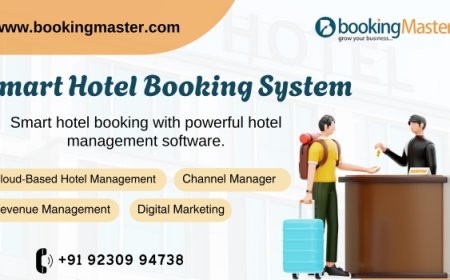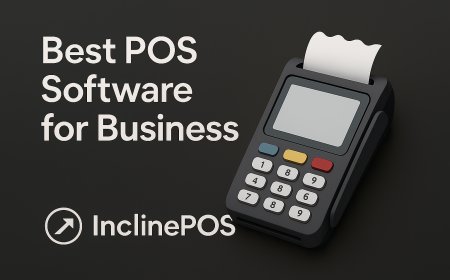How To Boost Customer Engagement Through Social Media For Small Businesses Marketing
Learn how small businesses can boost customer engagement using social media strategies, tools, and tips to grow brand loyalty and drive sales.

Social media is a powerful tool that can transform how you connect with your customers. In today's digital landscape, effectively engaging with your audience through platforms like Facebook, Instagram, and Twitter can lead to increased brand loyalty and sales for yourSmall Business Marketing. This guide will provide you with practical strategies and tips to enhance your customer engagement, helping you cultivate a strong online community and make the most of your social media presence.
Unpacking the Algorithm: Mastering Social Media Visibility
The Mechanics of Engagement Algorithms
Every social media platform employs its own algorithm to decide which content gets seen by users. Engagement metrics such as likes, shares, comments, and watch time heavily influence visibility. This means that the more your audience interacts with your posts, the more likely your content will appear in their feeds and even their friends feeds. Each platform aims to prioritize meaningful interactions, making it crucial for your content to resonate with viewers on a deeper level.
Strategies to Enhance Organic Reach
Expanding your organic reach involves several actionable tactics. Focus on high-quality content that speaks directly to your target audiences needs and preferences. Utilize hashtags strategically to increase discoverability, and engage actively with your followers. Posting consistently at the right times plays a significant role, as does launching interactive posts like polls and questions to encourage participation. Leveraging user-generated content can also build community while enhancing credibility.
A common mistake is underestimating the power of storytelling in your posts. Crafting narratives around your brand or products encourages shares and comments, which feed the engagement algorithm favorably. Additionally, research shows that videos generate 1200% more shares than text and images combined, making them a potent tool in your content arsenal. Analyzing performance through insights can help you refine your strategy, revealing what kind of content prompts the most interaction. By tailoring your approach to include these elements, you not only increase visibility but strengthen your connection with your audience, fostering loyalty and companionship for your brand.
Crafting Compelling Content: The Heartbeat of Engagement
Content serves as the lifeblood of your social media engagement strategy. The right blend of storytelling, information, and emotion captivates your audience, making them more likely to share, comment, and interact with your brand. Aim for authenticity and relevance in every post while staying aligned with your business goals. Engaging content fosters a community around your brand, encouraging customers to become ambassadors, driving further interaction and loyalty.
The Power of Visual Storytelling
Visual storytelling harnesses the innate human attraction to images and videos to convey messages quickly and effectively. Platforms like Instagram and TikTok thrive on visually engaging content. Craft visuals that reflect your brand identitywhether through striking images, infographics, or short videosto draw in your audience. A study found that social media posts with visuals receive 94% more views, underscoring the necessity of using compelling imagery to connect with your customers.
Tailoring Content for Different Platforms
Your content should resonate with users on each social media platform, as different audiences seek unique formats and styles. Facebook favors longer, conversational posts and shares, while Twitter thrives on concise messages and trending hashtags. LinkedIn users prefer professional insights, so industry-related articles work well here. Recognizing where your audience spends their time allows you to create content that not only fits the platform but also enhances engagement.
Different platforms necessitate different types of content to engage effectively. For instance, Instagram is visually driven, meaning eye-catching imagery or short videos should dominate your posts. On the other hand, Twitter's character limit demands snappy text and impactful hashtags. If your target audience includes business professionals, LinkedIn is ideal for sharing whitepapers or insightful industry commentary. By adapting your content style and messaging to match these varying expectations, you can maximize your reach and engagement on every platform you're active on.
Building a Community: Interaction Beyond Sales
Fostering a community around your brand can significantly enhance customer engagement beyond mere transactions. This means creating an environment where your audience feels valued and included, helping them develop a connection with your brand. By prioritizing interactions and shared interests, you encourage loyalty and repeat business while building a network of advocates who spread the word about your offerings. Emphasizing relationships over revenue can transform your customers into a tight-knit community that actively promotes and supports your business.
Encouraging User-Generated Content
User-generated content is a powerful way to engage your audience, allowing them to share their experiences and showcase your products. You can prompt this by creating authentic hashtags, running contests, or simply asking your followers to share photos of your products in action. Celebrating their contributions not only enriches your content but also fosters a sense of ownership among your customers, making them feel like integral parts of your brand's journey.
Cultivating Meaningful Conversations
Engaging with your customers on a personal level can turn casual interactions into deep conversations. Answering questions, responding to comments, and seeking feedback shows that you care about their opinions and experiences. By addressing their concerns genuinely and sharing stories related to your business, you create a two-way dialogue. Customers appreciate brands that listen, which fosters loyalty and encourages them to share their insights with others.
To cultivate meaningful conversations, focus on authenticity and relatability. Share behind-the-scenes content, invite customers to share their thoughts during live Q&A sessions, and actively participate in discussions relevant to your industry. By doing so, you not only boost engagement but also demonstrate that you value your customers input. When they see that their opinions matter, theyre more inclined to express their feelings openly, which strengthens brand loyalty and attracts potential new customers through organic word-of-mouth. Aim to create a space where your audience feels heard and respected, which ultimately enhances their connection with your brand.
Analyzing Success: Metrics that Matter
Evaluating the success of your social media strategy hinges on analyzing key metrics that reflect customer engagement and brand reach. Understanding which numbers indicate growth or decline will empower you to make informed decisions for future campaigns. Focus on the data that tells you how well you're connecting with your audience and how your content is driving meaningful interactions.
Key Performance Indicators for Engagement
Focusing on the right Key Performance Indicators (KPIs) helps you gauge customer engagement effectively. Essential KPIs include likes, shares, comments, click-through rates, and follower growth. Each metric offers unique insights; for instance, a high number of shares signifies valuable content, while comments can indicate a strong community connection. Tailoring your strategy based on these metrics can enhance your customer engagement over time.
Tools and Techniques for Monitoring Growth
Several tools can assist you in tracking and analyzing your social media performance. Platforms like Hootsuite and Sprout Social provide in-depth reports on your KPIs, helping you visualize trends and engagement patterns. Google Analytics can further bridge the gap by showing how social media traffic converts into website actions. Utilizing these tools leads to better decision-making and targeted strategies that foster deeper customer relationships.
Monitoring growth through analytical tools ensures you're receiving real-time insights into your audience's behavior. For example, Hootsuite's analytics dashboard can provide you with monthly reports showcasing engagement trends across various platforms. By setting your goals and tracking metrics such as engagement rates, you can pinpoint what works and what needs adjustment. This data-driven approach will allow you to continually refine your social media strategy, fostering stronger connections with your audience while driving conversions and growth.
Navigating Crisis: Keeping It Real During Tough Times
During challenging periods, authenticity becomes the cornerstone of your social media strategy. Customers appreciate genuine communication that acknowledges difficulties while providing reassurance. Whether its a public health issue, economic downturn, or unexpected challenges in your business, addressing these situations head-on allows you to maintain trust and deepen relationships with your audience. Sharing your journey transparently fosters a sense of community that can be pivotal in retaining customer loyalty.
Authentic Responses to Negative Feedback
Negative feedback is inevitable, but how you respond can make all the difference. Engaging directly with dissatisfied customers and addressing their concerns shows that you value their input. Personalizing your responses, offering solutions, and even apologizing when necessary creates a dialogue that can turn a negative experience into a positive one. Customers will appreciate your willingness to listen and rectify issues, often becoming your strongest advocates as a result.
Leveraging Social Media for Transparency
Harnessing social media as a platform for transparency allows you to openly share your business updates, challenges, and responses to customer needs. Posting regular updates, behind-the-scenes glimpses, and even live Q&A sessions about your operations can demystify the business process and build trust. For example, brands like Starbucks have effectively used their platforms to discuss sourcing practices and community initiatives, showcasing their commitment to the values they promote. This level of openness not only boosts customer engagement but also reinforces brand loyalty.
Final Words
Conclusively, boosting customer engagement through social media for your Small Business Marketing requires a strategic approach that aligns with your brand voice and audience preferences. By consistently posting valuable content, actively responding to comments, and utilizing interactive features, you can foster a vibrant online community. Analyzing your performance metrics will guide you in refining your strategies, ensuring you remain relevant and connected to your customers. Embrace these tactics to elevate your social media presence and drive meaningful interactions with your audience.
Q: What strategies can small businesses use to engage customers on social media effectively?
A: Small businesses can adopt several strategies to enhance customer engagement on social media. Firstly, posting relevant and high-quality content that speaks directly to the interests of their target audience is crucial. This could include behind-the-scenes looks, customer testimonials, and engaging visuals. Additionally, hosting interactive sessions such as Q&A videos, polls, or contests can stimulate participation. It's also beneficial to respond promptly to comments and messages, demonstrating that the business values customer interaction. Leveraging user-generated content by sharing posts from satisfied customers can further enhance community engagement.
Q: How important is consistency in posting on social media for customer engagement?
A: Consistency in posting is vital for maintaining customer engagement on social media. By establishing a regular posting schedule, businesses can keep their audience informed and entertained, which helps build loyalty and anticipation among followers. Posting consistently also ensures that the content remains fresh and relevant. Small businesses might find it helpful to use scheduling tools to plan their content in advance, allowing them to maintain a steady flow of communication even during busy periods. This consistent presence serves to reinforce the brand in the minds of consumers, keeping the business top-of-mind when they are ready to make a purchase.
Q: How can small businesses measure the effectiveness of their social media engagement efforts?
A: Small businesses can evaluate their social media engagement efforts through various metrics. Key performance indicators (KPIs) such as likes, shares, comments, and overall reach provide insights into how content resonates with the audience. Additionally, monitoring the growth of followers over time can indicate whether the business is successfully attracting and retaining interest. Using analytics tools available on most social media platforms can help in tracking these metrics. It's also beneficial to gather feedback directly from customers through surveys or direct messages to gain qualitative insights into customer perception and engagement effectiveness.












































